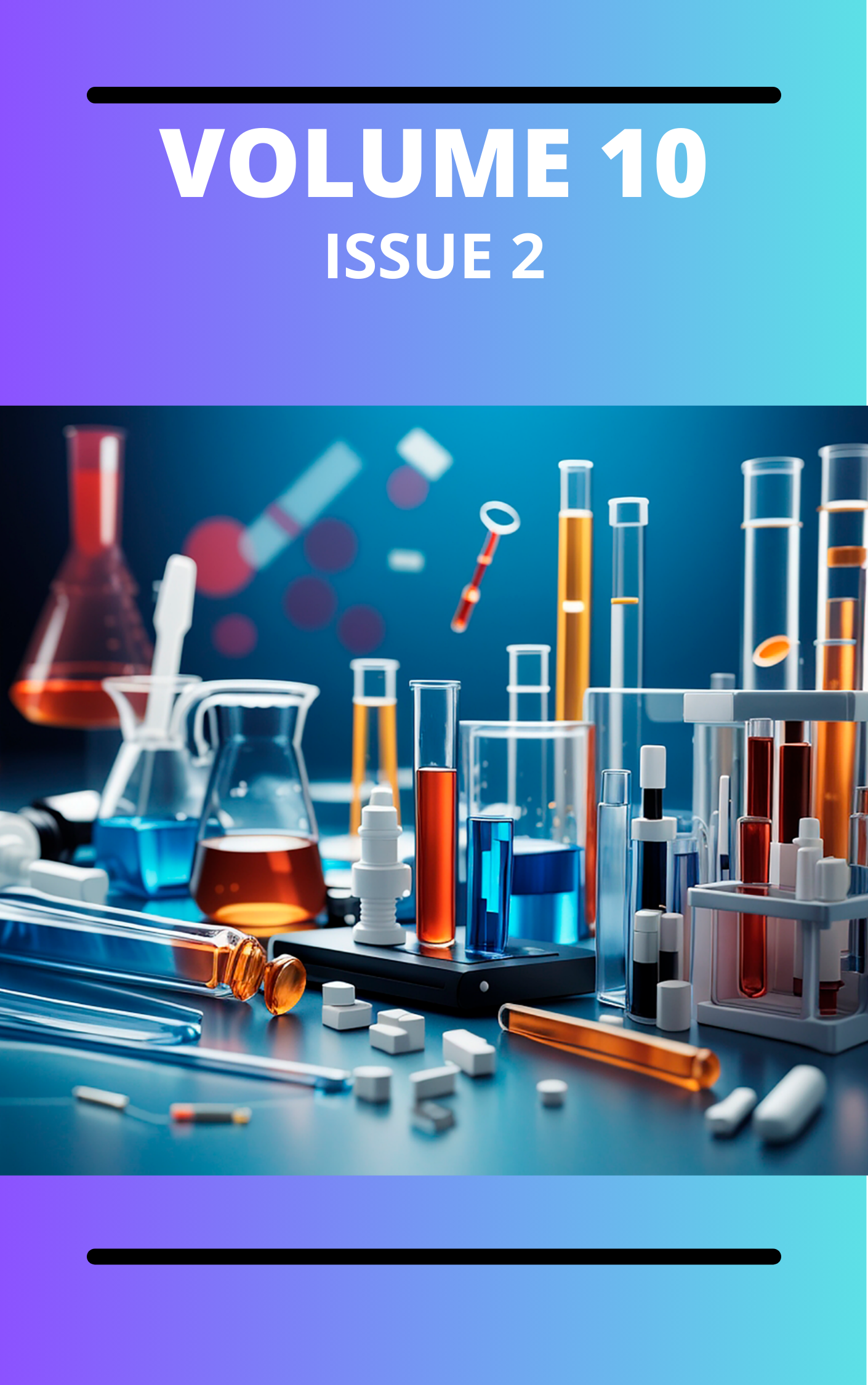Investigation of the Inhibitive Properties of Bio-Inspired Starch-Polyvinyl Acetate Graft Copolymer (Ps-Pvagc) on the Acid Corrosion of Mild Steel
Keywords:
Biopolymer, inhibition efficiency, corrosion rate, graft copolymerAbstract
Anticorrosive properties of potato and corn starch, potato starch-polyvinyl acetate graft copolymer (PS-PVAGC) and modified biopolymer. PS-PVAGC was prepared by grafting potato starch into PVA using a crosslinking agent. The modified biopolymer was synthesized by blending starch with NaOH and borax. The weight loss method was used to test the inhibitors on mild steel in 1.0 M HCl at room temperature, the observed changes in functional groups of the inhibitors during the entire experiment were monitored using the FTIR method. The results obtained showed that within 2 hours and a concentration of 4 g of the inhibitor, corn starch produced a very low inhibitor efficiency (IE) of 38.52%, while potato starch yielded a maximum IE of 79.81%. The modified biopolymer performed better with a maximum IE of 87.90% while PS-PVAGC performed best with a maximum IE of 92.5%. The inhibitors all reduced the corrosion rates as their concentrations were increased; however, the poor performance of pure starch can be attributed to its poor solubility in the acid solution and poor adhesive power on the metal surface. All formulations showed OH broad peaks (between 3446cm-1-3287 cm-1) as the major group offering heteroatom (i.e oxygen) for the adsorption of the inhibitor and subsequent suppression of the corrosion of the metal.
Downloads
Published
Issue
Section
Similar Articles
- Ubong Ime Essien, Anduang Odiongenyi, Clement Obadimu, Iniobong Enengedi, Investigation of Snail shells as an Adsorbent and Precursor for the synthesis of Calcium Oxide Nanoparticles for the Removal of Amoxicillin from Aqueous Solution , Communication In Physical Sciences: Vol. 9 No. 4 (2023): VOLUME 9 ISSUE 4
- M. E. Khan , Synthesis, Spectroscopic Characterization and Biological Studies Of 2-{[(2-hydroxy-5-nitrophenyl)methylidene]amino} nicotinic acid and Iron (II) complexes , Communication In Physical Sciences: Vol. 5 No. 2 (2020): VOLUME 5 ISSUE 2
- Itoro U. Okon, Eteyen A. Uko, Aniebiet M. Essien, Rachel S. Okon, H. H. Oronubong, Application of Moringa oleifera as a Natural Coagulant for the Treatment of wastewater from Bakery and Brewery Industries in Uyo, Akwa Ibom State, Nigeria , Communication In Physical Sciences: Vol. 7 No. 4 (2021): VOLUME 7 ISSUE 4
- Isaac Chukwutem Abiodun, Monday Edward Edem, Obasesam Ebri Agbor, Investigation of the Structural and electronic properties of Ternary AB₂X₄ based material via Density Functional Theory (DFT) for Optoelectronic Applications , Communication In Physical Sciences: Vol. 12 No. 1 (2024): VOLUME 12 ISSUE 1
- Kingsley Uchendu, Emmanuel Wilfred Okereke, Exponentiated Power Ailamujia Distribution: Properties and Applications to Time Series , Communication In Physical Sciences: Vol. 12 No. 5 (2025): Vol 12 ISSUE 5
- Taye Temitope Alawode, Molecular Docking Studies on Eudesmane Sesquiterpenes as Potential Anti-leishmanial Agents , Communication In Physical Sciences: Vol. 12 No. 1 (2024): VOLUME 12 ISSUE 1
- Abubakar Yahaya, Modification of Dual to Separate Product-type Exponential Estimator in Case of Post- Stratification , Communication In Physical Sciences: Vol. 7 No. 4 (2021): VOLUME 7 ISSUE 4
- Augustine Osondu Friday Ador, Isaac Mashingil Mankili, Franka Amaka Nwafor, Silas Abahia Ihedioha, Bright Okore Osu, Analyzing Market Price Equilibrium Dynamics with Differential Equations: Incorporating Government Intervention and Market Forces , Communication In Physical Sciences: Vol. 11 No. 4 (2024): VOLUME 11 ISSUE 4
- Femi Emmanuel Awe, Muhammad Dahiru Faruruwa, Hadiza Abba, Green Synthesis, Characterization and Antibacterial Activity of Zinc Oxide and Titanium Dioxide Nanoparticles Using Terminalia Catappa and Cymbopogon Citratus Leaf Extract , Communication In Physical Sciences: Vol. 7 No. 4 (2021): VOLUME 7 ISSUE 4
- Gideon Wyasu, Batch adsorption of Hg2+ and As3+ ions in Hospital wastewater using activated carbon from Balanites aegyptiaca and Detarium microcarpum , Communication In Physical Sciences: Vol. 5 No. 4 (2020): VOLUME 5 ISSUE 4
You may also start an advanced similarity search for this article.




